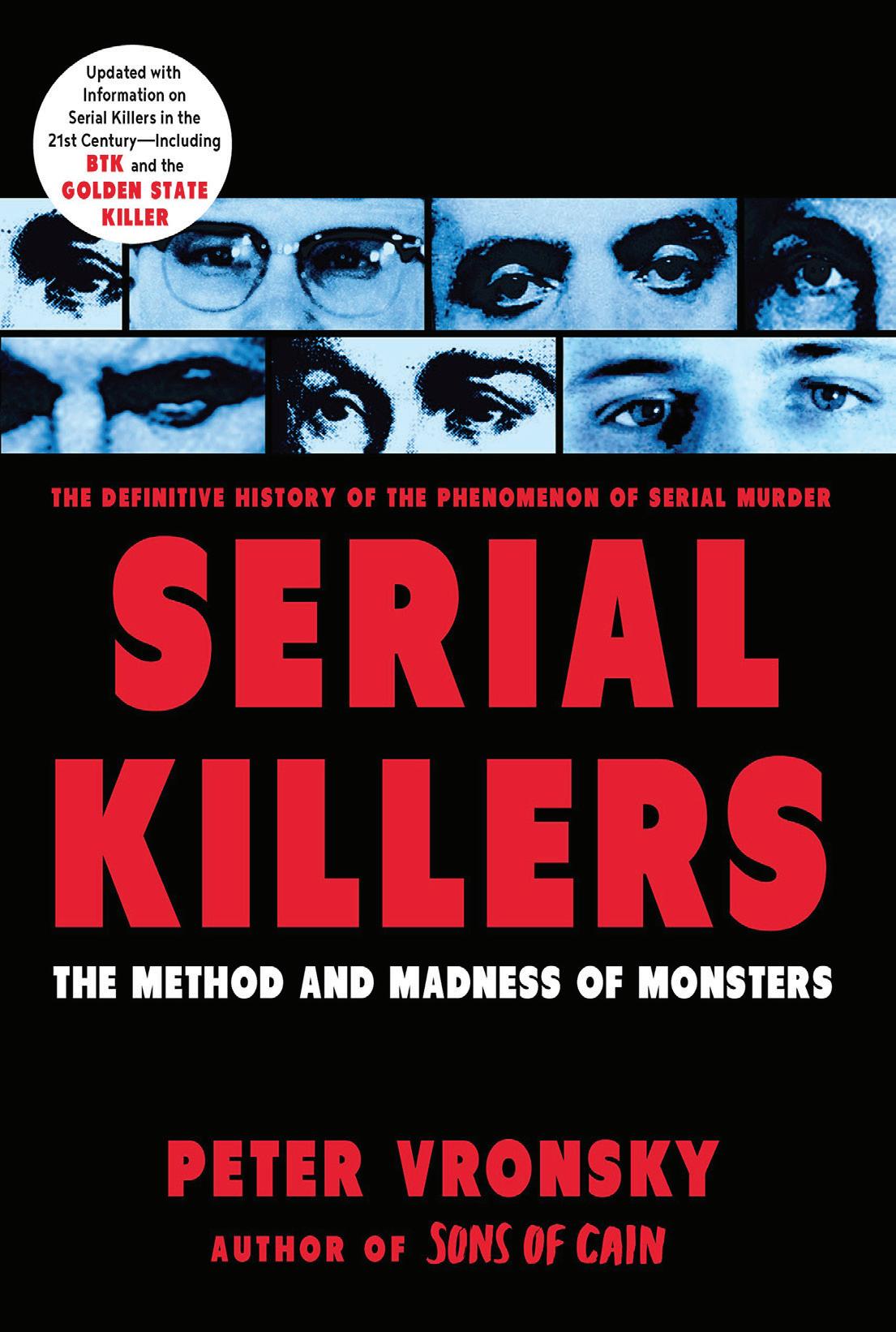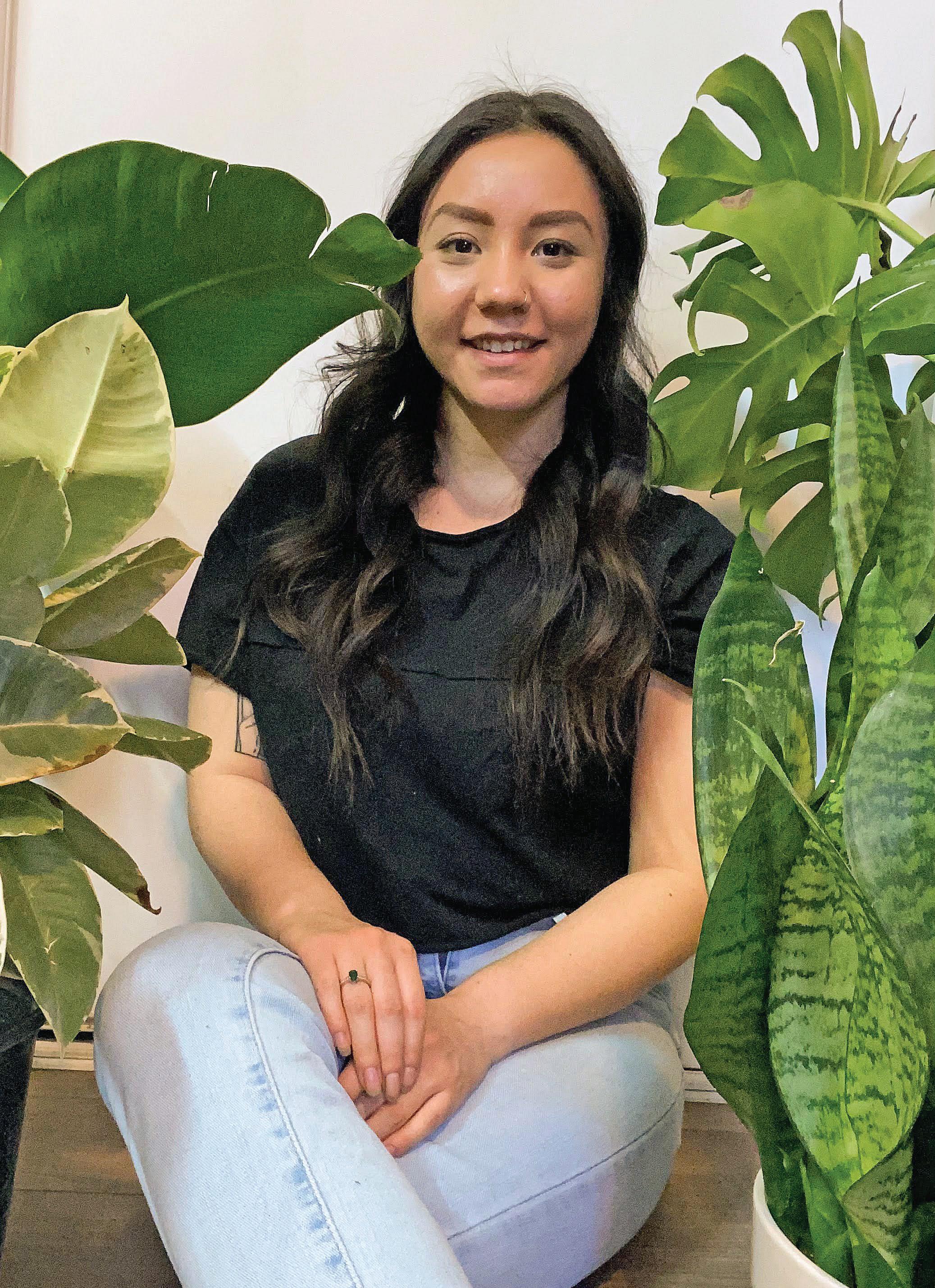
5 minute read
The supernatural saga of serial killers
THE MANY FACES OF EVIL
Historian looks at the evolution of serial killers through the ages
Advertisement
HALEN KOOPER hkooper@cjournal.ca


Toronto-based journalist, Peter Vronsky, spent his life studying history in the elds of international relations and espionage. However, a chance run in with mass murderer Richard Cottingham led Vronsky to writing books about serial killers and the disturbing history that surrounds them.
Before writing books about serial killers, Vronsky spent his career working in television as a news producer.
“I already worked a lot in investigative television from W5 to Fifth Estate. I’ve worked for CNN overseas. I kind of had some chops on how to investigate a story and how to research a story.”
What began his interest in serial homicide was meeting convicted Cottingham on Dec. 2, 1979 at about 8:45 am in a hotel elevator.
“I had randomly encountered a serial killer who had not been identified and not been apprehended as he was fleeing the scene of a double murder he had committed at a hotel I was trying to check into, ”he says.
Cottingham had just decapitated two women, setting their bodies and his hotel room on fire.
“Once that fire started and the re department arrived, I didn’t stay in that hotel,” he says.
“It was the next morning that I read that there were two torsos on re there and what had actually happened but I didn’t think at all about the guy on the elevator. Zero. Nothing.”
It wasn’t until almost a year later, when Cottingham was being charged and Vronsky saw a photograph of him in the paper, that it came to him.
“It was when I saw his photograph something like eight months to a year after that event, when he was nally charged with those murders,” he says.
“Once I saw his picture in the newspaper when he went on trial, I went, ‘Oh my god this is the guy.’”
Since then, Vronsky started to read everything he could on serial killers out of personal interest, even though none of the television work he did was about serial killers or crime.
But Vronsky, who got his PhD in criminal justice history and espionage in international relations when he was in his 50s, decided to get out of television in the ‘90s and write a book on his studies of serial killers.
“You know what they say, ‘write what you know,’ and that was one of the things I knew,” he says. “I wrote that book Serial Killers: The Methods and Madness of Monsters.”
“Every few years I kind of assemble what I’ve been looking at and reading primarily as a historian,” he says. “I don’t claim to be an expert on serial killers or a pro ler. I would extend my expertise only to the history of serial homicide and it’s investigation.”
As to why people are interested in serial killers, Vronsky points to old myths and legends as evidence that society has always had an interest in the morbid psychology of monsters.
“I think the rst major, popular, true crime text was the bible. The Bible is just full of these horri c murders, their detection and their punishment,” he says. “It’s a deeply scripted theme in JudeoChristianity.”
Vronsky sees similarities to the mythology of serial killers and monsters of folklore, western religions and the witch hunts carried out between 1450 and 1650.
“During those witch hunts, they also were arresting werewolves,” he says. “People were accused of not only communing with the devil to become a witch but also communing with the devil to become a werewolf.”
After learning about the werewolf trials, Vronsky started to look into what these supposed werewolves were being accused of.
“They were being accused of abducting, raping young women working in the elds,” he says. “There was one case where an individual had a small store in a village and he was luring children to his store and killing them there and dismembering their bodies.”
For Vronsky, the descriptions of
how these werewolves are similar to the pro les of twentieth and twenty- rst century serial killers.
“They were in their human form, lived in the community and were good neighbours, and assisted in the search for these missing children,” he says. “The only di erence between these werewolves and John Wayne Gacy is they were imbued with a supernatural transformation.”
Vronsky also sees similarities in the former FBI pro ling system of serial killers – the organized/ disorganized dichotomy of o enders – and how we look at vampires and the werewolves.
“Your organized killer has social charm, he seduces his victim into vulnerability, just like the vampire,” he says. “The vampire has to be invited into your home, in some vampire legends. So the vampire charms his way in.”
On the other hand, Vronsky says the disorganized serial killer doesn’t have the charm and persuasion of the organized killer, so they often take a di erent approach to their murders.
“They end up blitz attacking their victim with brute force. And that’s the vampire and werewolf model.”
Vronsky suspects that our folklore monsters were just active serial killers who were given supernatural qualities because psychiatry wasn’t invented at the time.
In fact, Vronsky says if you look at
Net ix, all of those documentaries on serial killers remind him of the same old horror bedtime stories being retold, this time a new generation.
“Of course, when we used to hear those things for the rst time, oh my God. We had never heard that kind of thing,” he says.
“People today who don’t know those stories and were raised in an era of the last 20 years in a kind of non-serial killer era. Those stories are as new to them as they were to my generation.”
Vronsky believes our fear of the supernatural monster has now been replaced with the modern monster - “the secular serial killer” - but to him they’re the same monsters.
“I suspect our vampires, our ghouls, our werewolves were actually human beings, active serial killers who we gave these super natural qualities to because psychiatry had not yet been developed.”










